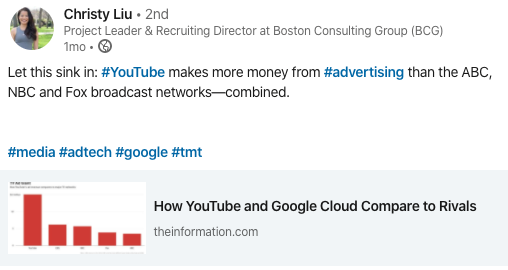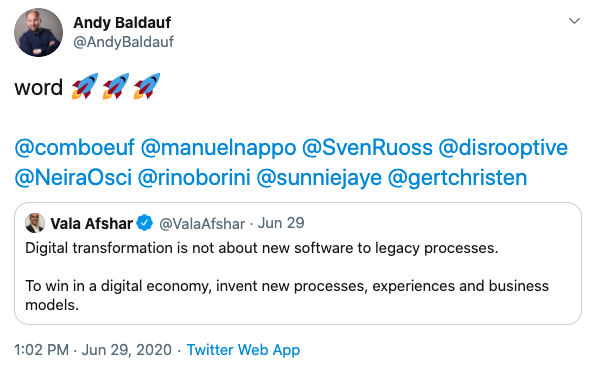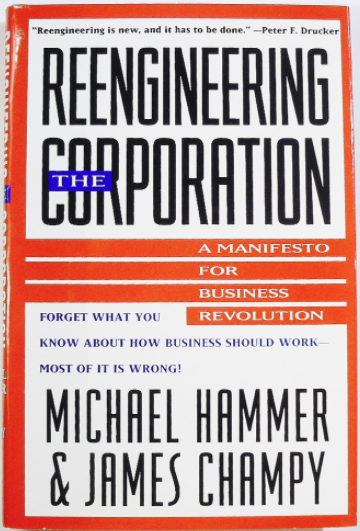Marks of Disruption #1: (Too) comfortable industries that haven’t changed in a long time are vulnerable
A Business Insider article was one trigger in my decision to focus on disruption in this newsletter: “Apple sold nearly 10 million more watches than the entire Swiss watch industry in 2019”. Think about it. Apple shipped 30.7 million watches in 2019, compared to 21.1 million watches shipped by the entire Swiss watch industry! What’s even more alarming is Apple’s 36% growth in volume over the previous year, compared with a 13% decline for Swiss watches.

For 40 years, the Swiss watch industry stuck to the same strategy: Mass-produced, reasonably priced analog quartz watches at the low end, and super-high-quality, expensive luxury watches at the high end. Its marketing remained frozen in time, too, with suitable brand ambassador celebrities, event sponsorships, and airline-magazine-style glossy ads.
This approach worked well for the Swiss for decades, so there was no need to rock the boat. Enter the iPhone and Fitbit, and the boat began taking on water fast. Fitbit started the category of wearable sensors, and Apple the one for wrist-worn computers. In 2019, Apple and Fitbit together shipped more than twice as many devices as the Swiss watch industry, and this doesn’t even include all the Android-based smartwatches.
Maybe it was too much for the Swiss watch industry to conceive of ideas for more products they could sell to the world’s wrists. After all, they were enjoying the good times of doubling their volume in the early 2000s. But latest in 2007, the alarm bells should have been ringing in Geneva, Bienne, and Zurich.
The point? Remember the Innovator’s Dilemma! You can’t outrun a disruption by doing more of the same old same old. Banks, learn from the fintech startups! Carmakers, stop belittling Tesla! Insurance companies, stop relying on regulation! Healthcare organizations, don’t think that industry structures can’t be changed. Watchmakers realize that your traditional customers are dying off (literally!). I’ll always remember, I once worked at NOKIA…
Marks of Disruption #2: The winner takes it all
Another trigger that got me to focus on disruption was the first-time publishing of YouTube’s advertising revenue: It’s greater than the 4 U.S. TV networks CBS, NBC, Fox, and ABC combined!

www.theinformation.com/articles/how-youtube-and-google-cloud-compare-to-rivals
Traditional TV studios had 100 years of experience, billions of dollars invested in studio and production infrastructure, and highly paid celebrities on payroll to keep the loyalty of viewers. Didn’t make a difference; uprooted by a 25-year-old upstart from Silicon Valley with no studios, owning no content, and no celebrities to keep happy.
Of course, all these TV studios also launched streaming services in the last 5 years. But even so, they couldn’t match the attractiveness of YouTube and its parent company, Google, who owns the ad booking services that allow companies to conveniently buy ads across all Google online properties. The TV studios, along with the media companies who own them, just couldn’t imitate the convenience and went where the other search engines once went – to the marketing fringes.
The point? If disruption is coming to your industry, there’s no such thing as being half in. Because often, when one dominant player emerges, that winner takes it all. Google, Facebook, and Amazon together now garner 70% of the digital advertising spend. Everybody else has to fight for the post-disruption scraps.
You have a choice: Either be passive and the new players will push you to the fringes where you are left to try to react. Or you can be proactive and take a radical course, disrupting yourself, but at least on your own terms.
Marks of Disruption #3: You may not see disruptors until it is too late.
You simply cannot look away from potential competitors or disruptors.

This New York Times article made me listen up: A TikTok user uploaded a video asking others to order tickets for a Trump rally — but not to go. A few days later, the Trump campaign proudly boasted that over 1 million people had requested tickets. However, only 6,200 people actually ended up attending the rally.
The article reveals how TikTok users used this new medium to spread the word and motivate their friends to join the prank. The result was impressive – and the rally organizers never knew what was happening until it was too late. I foretold in the December 2019 Digigram that Tiktok is “… THE highly addictive platform for the quick mobile video candy that one of the most attractive consumer groups wants.”
The Tulsa incident shows that the masses of TikTok users have woken up — and mobilized (the potential: 1.5 billion downloads of the app globally). They’re using the technology and their power of the masses to take stances. As a result, they can disrupt causes or businesses that they don’t like.
As I said in December, TikTok is way more than just a selfie app for kids. Anyone managing a communications product, campaign, or brand today must consider TikTok, or else risk the kind of disruption that occurred in Tulsa. The same of course applies to other disruptive technologies, mediums, and trends, too.
Marks of Disruption #4: Don’t automate, obliterate!
Embrace disruptive technologies as opportunities, don’t consider them threats.

1277693971116982278
Salesforce’s Chief Digital Evangelist names three factors for a successful digital transformation:
- Create new processes (don’t just move the old ones to online/ mobile/ ERP/ cloud, etc.)
- Create new experiences (don’t just port the old flows to new web tools)
- Create new business models (don’t just outsource the invoicing to a payment portal).
And I’d add: Think beyond SaaS – because everyone is doing that one already.
What he’s saying is: Use new technologies to your advantage — or risk disruption from someone else who will.

Disruptive technologies are an opportunity to “reengineer” (as Michael Hammer said) your business to cater to newly emerging customer tastes and preferences. And be sure to make full use of the capabilities of new technologies: Don’t just improve what you already have – instead, obliterate the legacies and reinvent your business anew! With extreme customer centricity, focus on solving problems for your customers that nobody else has been able to, and, of course, with greater efficiency.
Many are skeptical of new technologies, such as AI, robotics, and Blockchain. Some fight them. Others think they can wait and see. But either way, you won’t win. Trust me – I was at Nokia when fun was made of Apple as “that fruit company from Cupertino,” and an executive commented on making foldable phones “over my dead body.” Who’s dead now?
Emotions and controversies aside, AI has incredible potential to automate routine tasks, such as analyzing MRIs, X-rays, quality control, and camera feeds. Humans should not have to spend their valuable time looking at 90% good pictures anymore, when AI can do this 24/7. Expensive, trained humans should spend their time making critical decisions on the dubious last 10% of the pictures. The same pattern, of course, applies to many other applications of AI, too.
Blockchain is an unfalsifiable database of both assets and transactions, and it can solve many unsolved problems. I find the built-in smart contract feature to have incredible potential. How does it work? Describe all the conditions of a contract, including the sequence of events that will lead to the fulfillment of the contract. As soon as the requirements are met, voilà, the payment is automatically released to the seller. No paper, no auditing, no invoicing, no waiting, no financing, no bank fees, no nada. Everything falls directly into place with full transparency. The same pattern can, of course, be applied to many transactions outside of contracts, too.
All of these examples are entirely non-controversial! No cryptocurrencies or black markets are involved; just tremendous and attractive business opportunities with global potential. Get on it. Or someone else might. The above three are only examples: Voice and AR/VR, for instance, are disruptive new user interfaces, and they’re ready for primetime, too.


Pingback: Digigram Newsletter of April 2020! – Gert Christen.org
Pingback: Digigram Newsletter of July 2020! – Gert Christen.org